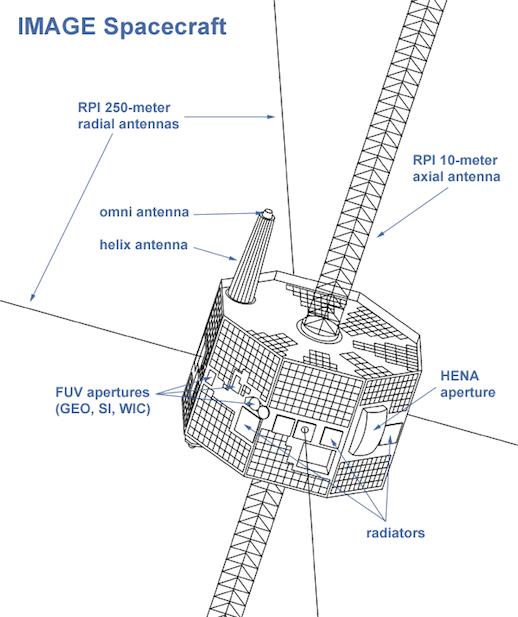This article is more than 1 year old
Zombie … in SPAAACE: Amateur gets chatty with 'dead' satellite
NASA reckons it might even be able to operate 'IMAGE', thought dead since 2005
An amateur astronomer hunting the Zuma satellite that SpaceX may or may not have lost has instead turned up signals from a NASA bird thought dead since 2005.
Zuma went missing after separation from its SpaceX Falcon 9 launcher earlier this month. Like many other amateur sky-watchers, Scott Tilley has since tried to locate the super-secret satellite.
During that search he instead received signals from NASA's IMAGE (Imager for Magnetopause-to-Aurora Global Exploration) satellite, which was pronounced dead in 2005.
Tilley's discovery has been confirmed by the Goddard Space Flight Center.
As Tilley wrote: “Upon reviewing the data from January 20, 2018, I noticed a curve consistent with an satellite in High Earth Orbit (HEO) on 2275.905MHz, darn not ZUMA… This is not uncommon during these searches. So I set to work to identify the source.”
He continued: “as I reviewed another chunk of spectrum a bit lower in frequency I was greeted by a much stronger carrier and what appeared to be data side bands.”
The signal he captured has a 2270.505 MHz carrier with sidebands at ±1.7 MHz.
Tilley believes IMAGE is still spinning at close to its operational value, with a period of around 175 seconds (the design value was 120 seconds).

The IMAGE satellite. Image: NASA
He suggested the satellite's unnoticed revival was a classic turn-it-off-and-turn-it-back-on scenario: IMAGE's high-earth orbit had a 90° inclination that regularly put it in eclipse, meaning the communication system got a reboot that eventually woke it back up.
That was at least as early as May 2017, because when Tilley reviewed his data archives, that's the oldest IMAGE signal he found.
Goddard's statement says it's secured time on the Deep Space Network to “focus on the source and determine whether the signal is indeed IMAGE”, and is hunting for the necessary “software and commands to potentially operate the mission”. ®
